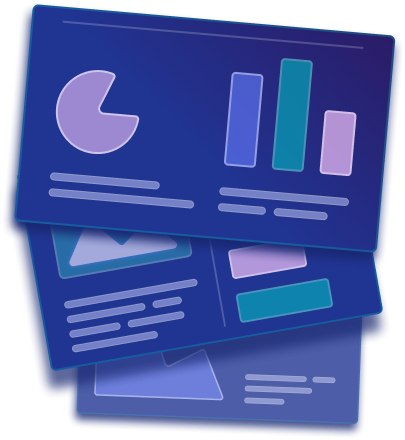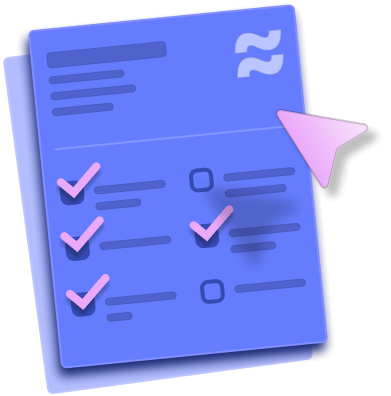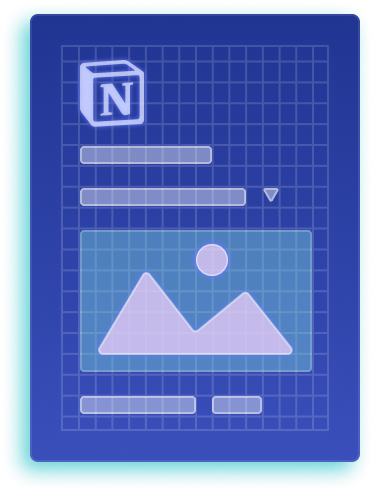
Conversion Rate Optimization: Best Practices for Webflow Websites
A conversion is when a user makes a desired action on your website, whether it’s downloading a whitepaper, buying a product, or scheduling a demo. CRO, or conversion rate optimization is just a set of strategies and techniques that increase the number of people that convert.
Now, why is CRO especially important for Webflow websites? Webflow offers a unique combination of design flexibility and built-in functionalities. This means you can create beautiful and user-friendly websites, but it also puts the onus on you to optimize those websites for conversions. By strategically using Webflow's features and following CRO best practices, you can turn your website into a conversion machine.
Note: If you’re looking to optimize a landing page beyond conversion rate, but also for SEO, check out our ultimate landing page checklist. Also, if you're interested in a more comprehensive approach to websites as profit-making tools, check out the video from our CEO, Uros.
{{cta}}
#1: Know Your Visitors: Unlocking User Insights with Webflow
The foundation of a successful CRO is understanding your website visitors. They're real people with goals, and uncovering their behavior is crucial. Webflow offers powerful tools to help you achieve this.
- Effortless Analytics: Webflow integrates with Google Analytics via the Data Goat app. This lets you track user actions, analyze traffic, and understand visitor navigation. No complex code needed!
- Visualize User Behavior: Microsoft Clarity, a popular tool also available as a Webflow app, provides session recordings, heatmaps, and click data. See how visitors interact with your site – watch them navigate, identify areas of confusion, and pinpoint where conversions might be dropping.
By combining website traffic data with recordings and user interactions, you can:
- Identify drop-off points: Find the exact pages where visitors abandon your site. Are they leaving checkout? Struggling to find information? Data will reveal these roadblocks.
- Understand user flow: See how visitors navigate, uncovering any unexpected paths or areas where they might get lost. Optimize the user experience to guide them towards conversion.
- Gain insights into user behavior: Heatmaps show which website elements attract attention and which go unnoticed. This data informs design decisions and helps prioritize content placement.
Imagine you have a blog post with a call to action (CTA) at the bottom to encourage readers to subscribe to your newsletter. If the heatmap shows minimal attention to the CTA area, you might need to redesign it with a stronger call to action or place it in a more visually prominent location.
Webflow empowers you to gather user data without technical hurdles.
Leverage tools available within the Webflow ecosystem to move beyond assumptions and base your CRO strategy on real user behavior. This data-driven approach ensures you optimize your website for the people who matter most – your visitors.
#2: Setting Clear Goals and Hypotheses: The Cornerstone of Effective CRO
Knowing your visitors is crucial, but a successful CRO requires a roadmap. This roadmap is built on clear goals and well-defined hypotheses. Here's why they matter:
- Goals define success: What does "conversion" mean for your website? Is it a purchase, a newsletter signup, a download, or something else? Identifying your goals allows you to measure the effectiveness of your CRO efforts.
- Hypotheses guide testing: Once you know your goals, develop hypotheses – educated guesses – about what changes might improve your conversion rate. Hypotheses allow you to test specific elements using A/B testing, a method where you compare two versions of a webpage to see which one performs better.
Here's a step-by-step approach to setting clear goals and hypotheses:
- Identify your conversion goals: Start by defining what a successful conversion looks like on your website. If you’re an e-commerce, it could be a purchase, adding an item to a cart, or initiating a checkout. Businesses often have different lead generation techniques, such as filling out a contact form, subscribing to a newsletter, or downloading an e-book. But CRO goals can be related to many other different things. For example, it can be reducing bounce rate, encouraging social media shares, or increasing time spent on the page.
- Analyze user data: Leverage the insights from website analytics tools (like Google Analytics) and user behavior data (like heatmaps) to understand visitor behavior. This will help you identify areas with potential for improvement.
- Develop specific hypotheses: Based on your goals and user data, formulate hypotheses about what changes might increase conversions. Here's the key: make your hypotheses specific, measurable, achievable, relevant, and time-bound (SMART).
Here’s a real-life example:
Let's say you run a website selling handmade jewelry. Your goal might be to increase the number of visitors who add items to their cart (add-to-cart rate).
Heatmaps show visitors spend minimal time on product pages and rarely click on the "Add to Cart" button.
Based on this data, you might hypothesize that "improving product descriptions with more details and high-quality images will increase the add-to-cart rate by 10% within one month."
This is a SMART hypothesis:
- Specific: It targets product page improvements.
- Measurable: You can track the add-to-cart rate using analytics tools.
- Achievable: Improving product descriptions is a feasible task.
- Relevant: It directly addresses the goal of increasing add-to-cart rate.
- Time-bound: It specifies a timeframe to measure results.
#3: Prioritizing User Experience: The Key to Conversion Success
A website can be visually stunning, but if it's confusing or frustrating to navigate, visitors will bounce before converting. Here's how focusing on UX can dramatically improve your conversion rate:
- Clarity is king: Visitors should instantly understand what your website offers and how to take the desired action. This means clear and concise navigation, easy-to-read content, and prominent calls to action (CTAs).
- Frictionless navigation: Imagine a visitor wanting to buy a specific product, but they have to navigate through a maze of menus and subcategories. Frustration sets in, and conversion is lost. Strive for a user journey that is intuitive and allows visitors to find what they need quickly.
- Mobile-first mentality: With the rise of mobile browsing, a website that's not optimized for smartphones and tablets is a major conversion killer. Ensure your website is responsive and adapts seamlessly to different screen sizes.
Optimizing for UX is an ongoing process, but here are some practical tips to get you started:
- Simplify website structure: Avoid complex navigation menus and prioritize clear labeling of sections.
- Prioritize content hierarchy: Use headings, subheadings, and bullet points to structure your content, making it easy to scan and digest.
- Optimize images and videos: Large files can slow down loading times, so compress images, unpixelate image elements for better clarity, and consider lazy loading for videos to ensure a smooth user experience.
- Strategically place CTAs: Make your calls to action clear, concise, and visually prominent. Place them at logical points in the user journey, where visitors are most likely to convert.
Webflow is key for fast and effective UX changes, and here’s how:
- Intuitive navigation: Drag-and-drop functionality allows you to create clear and concise navigation menus, ensuring visitors can easily find what they're looking for.
- Easy-to-read content: Webflow's clean interface and rich text editor make it easy to format content with clear headings, subheadings, and bullet points, improving readability and scannability.
- Logical page hierarchy: Organize your website content into clear and logical sections, making navigation effortless for visitors.
- Responsive design: All websites built with Webflow are inherently responsive, adapting seamlessly to different screen sizes and devices.
- Mobile preview mode: Webflow's built-in mobile preview mode allows you to test and refine your website's appearance on various mobile devices for an optimal user experience.
Let’s take a look at an example.
Imagine you run a website offering yoga classes. A visitor interested in signing up might be discouraged by a cluttered homepage with too much information.
Revamp the homepage to prioritize a clear schedule of upcoming classes, with easy-to-read times, locations, and instructor information. Implement a prominent "Book Now" button next to each class to streamline the signup process.
This approach focuses on clarity and ease of use. Visitors can quickly find the information they need and take the desired action (booking a class) with minimal effort. This way, you create a website that fosters trust, reduces friction, and ultimately boosts conversions.
#4 The Power of Words: Crafting Compelling CTAs and Content for Conversions
Your website is a conversation with your visitors. The words you choose, both in your content and calls to action (CTAs), play a crucial role in driving conversions. Here's why focusing on compelling CTAs and content is essential for CRO:
- Content that resonates: Effective website copy speaks directly to your target audience's needs, desires, and pain points. By understanding your audience, you can craft content that resonates and compels them to take action.
- Clear CTAs that convert: A CTA is the bridge between website visitor and conversion. It should be clear, concise, and persuasive, leaving no doubt about the action you want visitors to take.
Crafting compelling CTAs and content requires a two-pronged approach:
1. Content Optimization:
- Know your audience: Conduct user research to understand your target demographic, their interests, and the challenges they face.
- Focus on benefits, not features: Highlight how your product or service solves your audience's problems and improves their lives.
- Write clear and concise copy: Avoid jargon and complex sentence structures. Aim for easy-to-read content that engages your audience.
- Optimize for scannability: Use headings, subheadings, and bullet points to break up text and make it easy for users to find the information they need.
2. CTA Design:
Action verbs lead the way: Start your CTAs with strong verbs like "Buy Now," "Download," or "Sign Up." These words create a sense of urgency and encourage action.
- Specificity is key: Don't leave your visitors guessing. Make your CTAs clear and specific about the action you want them to take.
- Visually appealing design: Use contrasting colors and clear buttons to make your CTAs stand out.
- A/B test your CTAs: Don't be afraid to experiment with CTA, including their words and position on the page to learn what works best for your visitors.
Here’s an example.
Let's say you run a website offering website design services. You might have a compelling blog post showcasing the benefits of a well-designed website for businesses.
Instead of focusing on the technical aspects of design, tailor your content to address common business concerns like increased brand awareness, improved customer engagement, and higher conversion rates. Use clear and concise language, with bullet points summarizing key takeaways.
Instead of a generic "Contact Us" button, consider a CTA like "Get a Free Website Design Consultation." This CTA is specific, uses an action verb, and offers a clear benefit (free consultation).
This should increase trust and make your conversion pipeline easier for the user.
#5 Embrace the Experiment: Continuous Testing and Iteration for CRO Success
CRO is not a one-time fix; it's an ongoing process of experimentation and refinement. This is where A/B testing comes into play.
A/B testing allows you to compare two different versions of a website element (like a headline, CTA button, or product image) to see which one performs better in terms of conversions.
Here's why A/B testing is essential for continuous improvement:
- Data-driven decisions: A/B testing removes guesswork from the equation. By analyzing data, you can identify which website elements resonate most with your audience and lead to higher conversion rates.
- Uncover hidden gems: Sometimes, seemingly minor changes can have a significant impact. A/B testing allows you to test even small tweaks and discover unexpected improvements.
- Iterative optimization: A/B testing is a foundation for continuous improvement. Based on test results, you can implement winning variations and develop new hypotheses to test further.
Here's a step-by-step approach to A/B testing for CRO:
- Identify an element to test: This could be anything from a CTA button to a product image or even the layout of your entire homepage.
- Develop a hypothesis: Formulate a specific prediction about how changing the element will impact conversions (e.g., "Changing the CTA button color from blue to green will increase click-through rate by 5%").
- Create variations: Design two different versions of the element you're testing.
- Run the test: Use A/B testing tools to split your website traffic and show each variation to a random sample of visitors.
- Analyze the results: Once you have statistically significant data, analyze the results and identify the winning variation.
Here’s an example:
Imagine you run a website selling fitness trackers. You might hypothesize that a more prominent "Buy Now" button on your product pages will lead to more conversions.
Create two versions of your product page. One version has a standard "Buy Now" button, while the other has a larger, bolder button with a different color. Run the test for a predetermined period, ensuring you gather enough data to draw statistically sound conclusions.
After the test period, analyze the results. If the data shows that the larger, bolder button resulted in a higher click-through rate and more purchases, this becomes your winning variation.
This is just one example. By continuously A/B testing different website elements and iterating based on data, you can continuously refine your website and optimize it for maximum conversions.
Conclusion: Measure, Hypothesize, Change, Measure
By following the best practices outlined above and leveraging the power of Webflow, you can create a website that converts visitors into loyal customers. Remember, the key lies in a data-driven approach:
- Measure: Continuously monitor website traffic and user behavior using analytics tools and heatmaps.
- Hypothesize: Based on your data, develop specific hypotheses about how to improve your conversion rate.
- Change: Implement those changes through A/B testing or website updates.
- Measure Again: Track the results of your changes and see what works best for your audience.
This iterative cycle of measurement, hypothesis, change, and measurement is the foundation of a successful CRO. By embracing this approach and continuously optimizing your website, you can turn Webflow's flexibility into a powerful tool for driving conversions and achieving your business goals.
If you need a Webflow agency to help you measure and implement changes to your website, get in touch with Flow Ninja.





The 2025 Playbook for Website Customer Acquisition
After helping 200+ clients skyrocket their conversions, we’ve created an in-depth marketing guide for turning websites into sales drivers.
.png)

.png)

in mind?
Talk with our team and learn how your ideas can become digital experiences.

.svg)









.png)
.png)



-min.png)

-min.png)









.svg)

.png)
.png)
.webp)
.svg)


